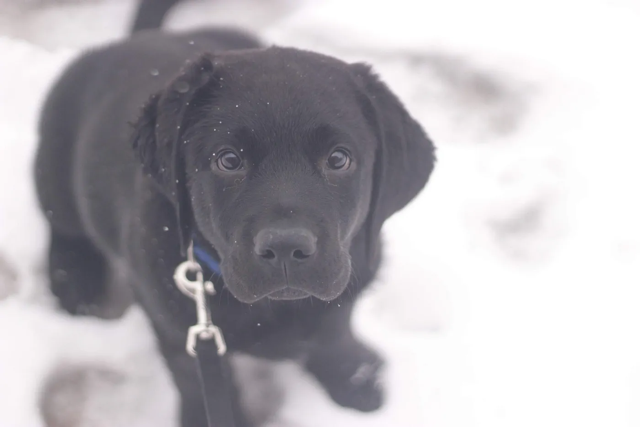Trying to figure out the best way to potty train / “housebreak” your new Lab puppy? In this video below, I go over the basics of Labrador retriever potty training, and how you can prevent all accidents. Or, read on to learn my protocol for easy Labrador retriever puppy potty training.
Step 1: Create a water & potty schedule.
Lab puppies LOVE to chug their water, so I like to schedule water times. Because puppies can generally ‘hold it’ for one hour for every month of age – chugging water means they have to pee more frequently, just like you and I.
Keep in mind that young LAB puppies will generally need to poop pretty soon after eating, AND PEE AFTER CHUGGING WATER
Step 2: Prevent all accidents inside the home.
Remember, this is the most IMPORTANT step. Why? Because peeing is a reinforcing behavior – a full bladder is uncomfortable. The second they pee, discomfort is relieved: pee + relief = reinforcement. Therefore, once they are used to peeing in a certain spot, the more they’re going to continue peeing there because they associate the location with relief.
A. The Crate. The best way to prevent accidents is by using the right-sized crate. Tips:
- Your pup should be able to stand up and fully turn around – but no roomier, or
- Your pup may learn to pee on one side of the crate and sleep on the other.
B. Eyes on Your Pup. Tips:
- Confine to small areas.
- Use a crate.
- Attach them to you.
- Block off their play area.
- Use other ways to keep them in to a small area near you.
C. Look for “The Sign”.
If they start sniffing around, pawing or trying to get your attention, catch them in the act…
- Remain vigilant.
- Notice the signals.
- Quickly pick them up, take them outside.
- Reward heavily for eliminating/being outside.
- Congrats to you! Give yourself a high five, too. You just created an association between your loving praise and Puppy’s relieved bladder + fresh outdoor air.
Young puppies are easily distracted so might forget to pee when you take them outside because of all the smells — even if they need to pee.
Meaning, if you take them back inside, they’re going to remember “oh yeah, I need to pee!” … then pee indoors.
Troubleshooting Tip: If your pup doesn’t eliminate within 5–10 minutes, put them in their crate for 5 minutes. Then try outside again. We want them to learn that the faster they do, the faster they will get to play and have their freedom back.
D. When Accidents Happen, Be Calm.
Uh-oh… An accident is just that – a mistake. While it’s a natural human reaction to yell at your dog or scare them when they pee on your floor, practice being patient. Unfortunately, when you scare or shame your dog, it will simply make them too scared to pee in FRONT of you so she will look for a hiding place – you may find a nice gift in your closet. Instead of being upset, practice keeping an eye out for “The Sign”.
If you’re annoyed with your puppy, it might be because you need a better understanding of puppy behavior. Don’t worry, you’re not alone – I provide all the tips in my Puppy Prep School course if you need additional help.
Step 3: Reward heavily when they DO go outside.
Give at least 3 high-value treats, and lots and lots of praise!
Labrador Retriever Potty Training Recap
While these steps may seem simple, keeping up with the routine and patience are not easy. It does require a lot of work.
Remember: puppies teach us patience, and a job well done now makes living with your adult dog so much easier. In the meantime, they are super duper cute.
